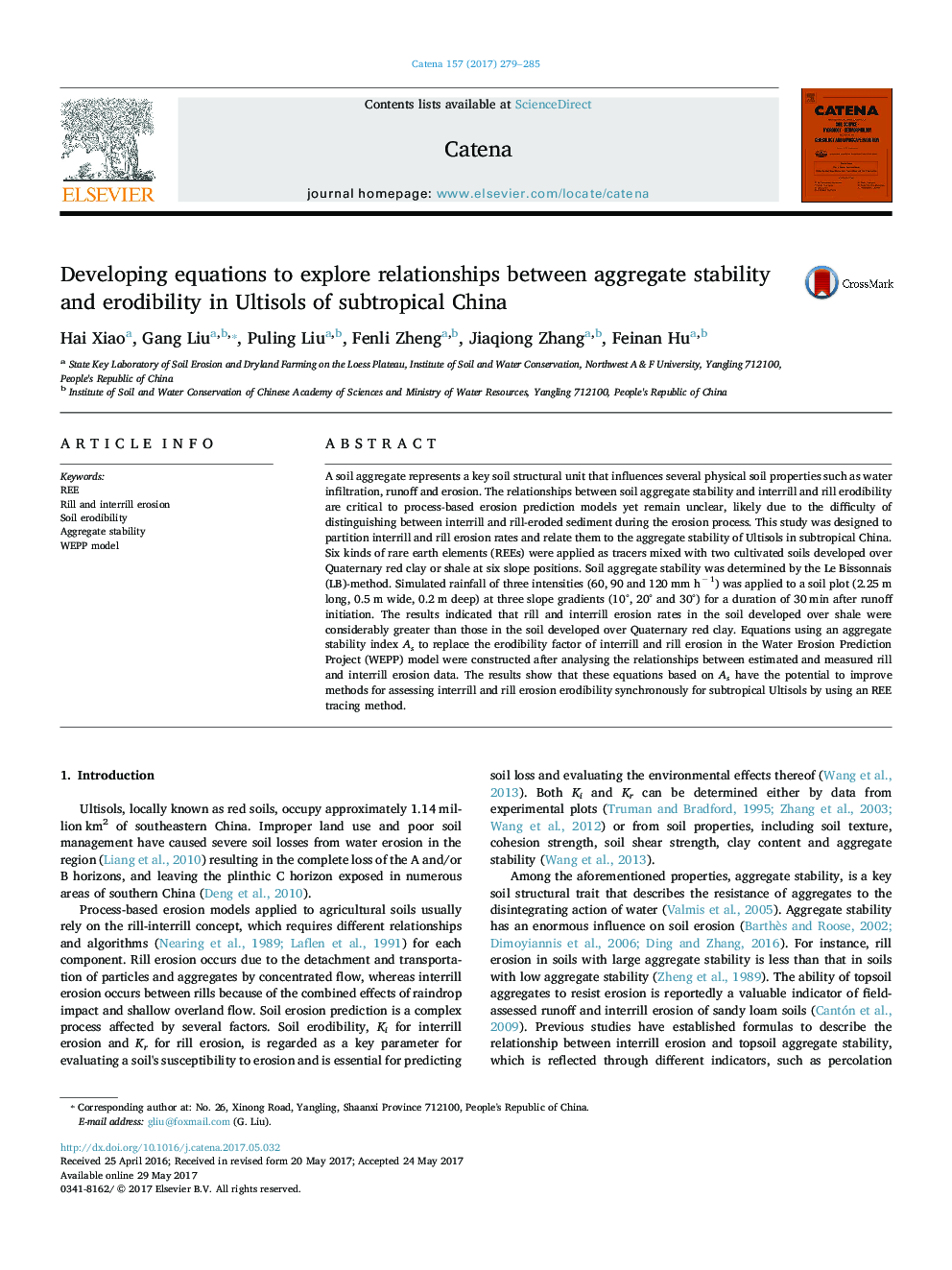| Article ID | Journal | Published Year | Pages | File Type |
|---|---|---|---|---|
| 5769865 | CATENA | 2017 | 7 Pages |
â¢Six kinds of REE were used as tracers to study rill and interrill erosion.â¢The aggregate stability of Quaternary red clay and the shale soil were estimated.â¢As was used to replace the erodibility factors in the WEPP model.â¢The new equations to predict interrill and rill erosion rate were verified.
A soil aggregate represents a key soil structural unit that influences several physical soil properties such as water infiltration, runoff and erosion. The relationships between soil aggregate stability and interrill and rill erodibility are critical to process-based erosion prediction models yet remain unclear, likely due to the difficulty of distinguishing between interrill and rill-eroded sediment during the erosion process. This study was designed to partition interrill and rill erosion rates and relate them to the aggregate stability of Ultisols in subtropical China. Six kinds of rare earth elements (REEs) were applied as tracers mixed with two cultivated soils developed over Quaternary red clay or shale at six slope positions. Soil aggregate stability was determined by the Le Bissonnais (LB)-method. Simulated rainfall of three intensities (60, 90 and 120 mm hâ 1) was applied to a soil plot (2.25 m long, 0.5 m wide, 0.2 m deep) at three slope gradients (10°, 20° and 30°) for a duration of 30 min after runoff initiation. The results indicated that rill and interrill erosion rates in the soil developed over shale were considerably greater than those in the soil developed over Quaternary red clay. Equations using an aggregate stability index As to replace the erodibility factor of interrill and rill erosion in the Water Erosion Prediction Project (WEPP) model were constructed after analysing the relationships between estimated and measured rill and interrill erosion data. The results show that these equations based on As have the potential to improve methods for assessing interrill and rill erosion erodibility synchronously for subtropical Ultisols by using an REE tracing method.
